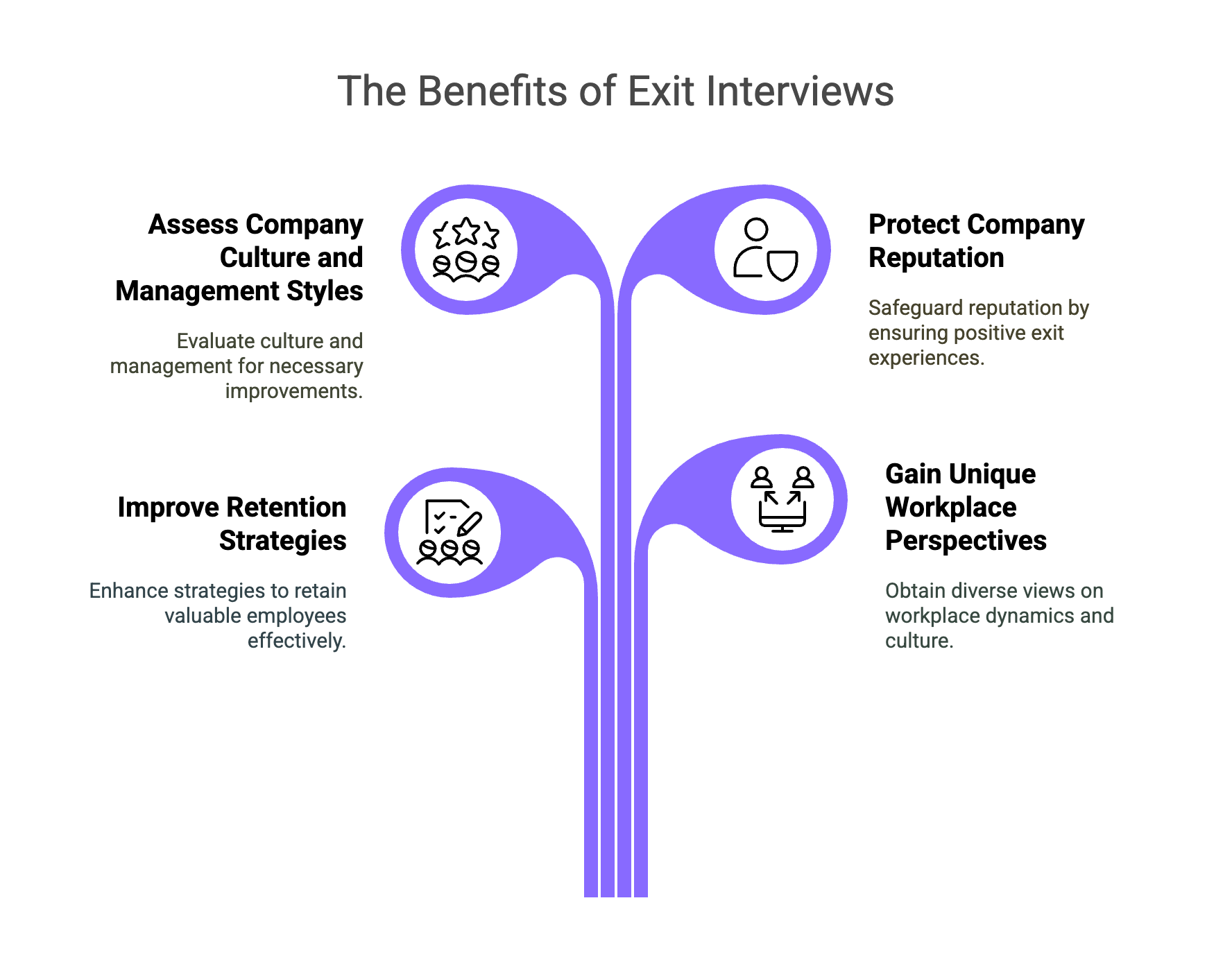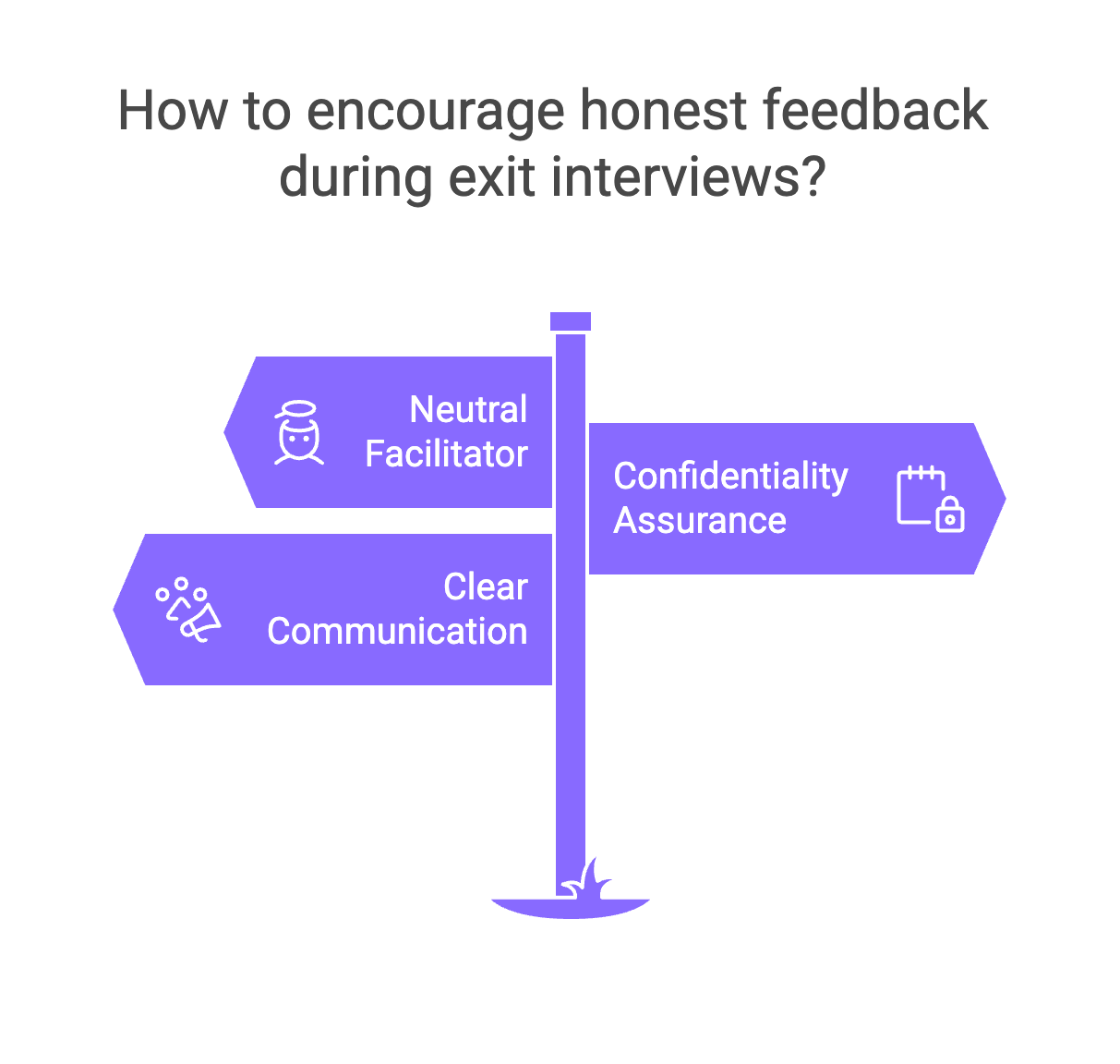Key Findings:
- Exit interviews offer valuable insights into workplace culture, leadership and retention challenges.
- Timing, tone and confidentiality are crucial for encouraging honest and constructive feedback.
- Neutral facilitators and well-prepared questions foster open dialogue and reveal actionable insights.
- Acting on common themes from exit interviews helps improve morale and reduce future turnover.
- Following up with departing employees supports a positive reputation and may open doors for future rehires.
High employee turnover can leave you looking for answers, often without understanding what went wrong.
Exit interviews — when done with care and intention — can serve as a powerful tool to collect honest feedback, spot negative workplace trends and implement changes that improve retention and company culture
6 Effective Exit Interview Best Practices to Enhance Your Organization's Farewell Process
Thinking about ways to transform your organization's approach to goodbyes? Here are six proven exit interview strategies that can turn leaving employees' feedback into a tool for improvement.
1. Understand the purpose of the exit interview
The primary aim of an exit interview is to collect feedback from employees who are leaving and identify areas for improving your retention strategies.
This will help you get unique perspectives on the workplace atmosphere, assess the company culture and management styles and make informed changes.
It will also allow you to protect your company’s reputation as employees who feel heard and respected during their exit process are less likely to share negative experiences publicly.

2. Schedule the exit interview thoughtfully
To maximize the effectiveness of the exit interview, schedule it on the employee’s last day or shortly before while their experiences are fresh in their mind, so that you receive productive feedback.
Explain to the departing employee their feedback is valued and will be used to improve the work environment for current and future employees.
This open communication can help them feel less stressed and share openly their thoughts and feelings.
3. Create a comfortable environment
To encourage honest feedback, consider inviting a neutral facilitator to conduct the exit interview. This approach will create a more relaxed atmosphere, allowing the departing employee to speak freely without fear of repercussions.
Reassure the employee that their feedback will be treated confidentially so that they feel safe and discuss all topics openly.
Clear communication about how their feedback will be used can also encourage honesty.

4. Prepare thoughtful questions
To collect meaningful insights during exit interviews, focus on specific areas that can provide actionable feedback.
These can include questions about job satisfaction, management effectiveness and workplace culture — here are some examples you could use:
- Why are you leaving?
- What did you enjoy or find frustrating about your job?"
- How would you describe the company culture?
- Do you have any suggestions for improving employee retention?
While your questions should be structured, make sure that the interview feels conversational.
This strategy will help the departing employee feel at ease and communicate their thoughts more naturally.
5. Act on feedback
Analyze the feedback gathered and look for common themes that appear in multiple interviews, as these can point to areas that require attention.
Implementing changes based on this feedback shows current team members that their voices matter and that the organization is committed to improvement.
Be transparent about the results with leadership and relevant departments — this will help align organizational goals with employee needs and build a positive work environment.
6. Follow up with the departing employee
After the exit interview, reach out to the departing employees to thank them for their contributions and feedback. This gesture will make them feel valued and help maintain a good relationship, which could be beneficial if the employee considers returning in the future.
If appropriate, offer support for the employee’s transition to their next opportunity — for example, providing references, career advice or networking opportunities. Such support can enhance the employee’s perception of the organization, even as they leave.

Why Exit Interviews Matter
An exit interview is not a formality — it serves as a catalyst to learn, grow and improve.
When done right, they provide honest insights into workplace culture, leadership and processes, which you can use to uncover patterns and address hidden issues related to talent retention, morale and performance.
Exit Interview Essentials Recap
Implementing effective exit interview best practices can turn goodbyes into opportunities for growth, contributing to a healthier workplace culture.
They can help retain talent and foster a positive reputation for the organization, making it an attractive place for future employees.

.png)

.png)
.png)